Military Flight Instructor's Most Important Lesson: Student Pilots Will Try To Kill You
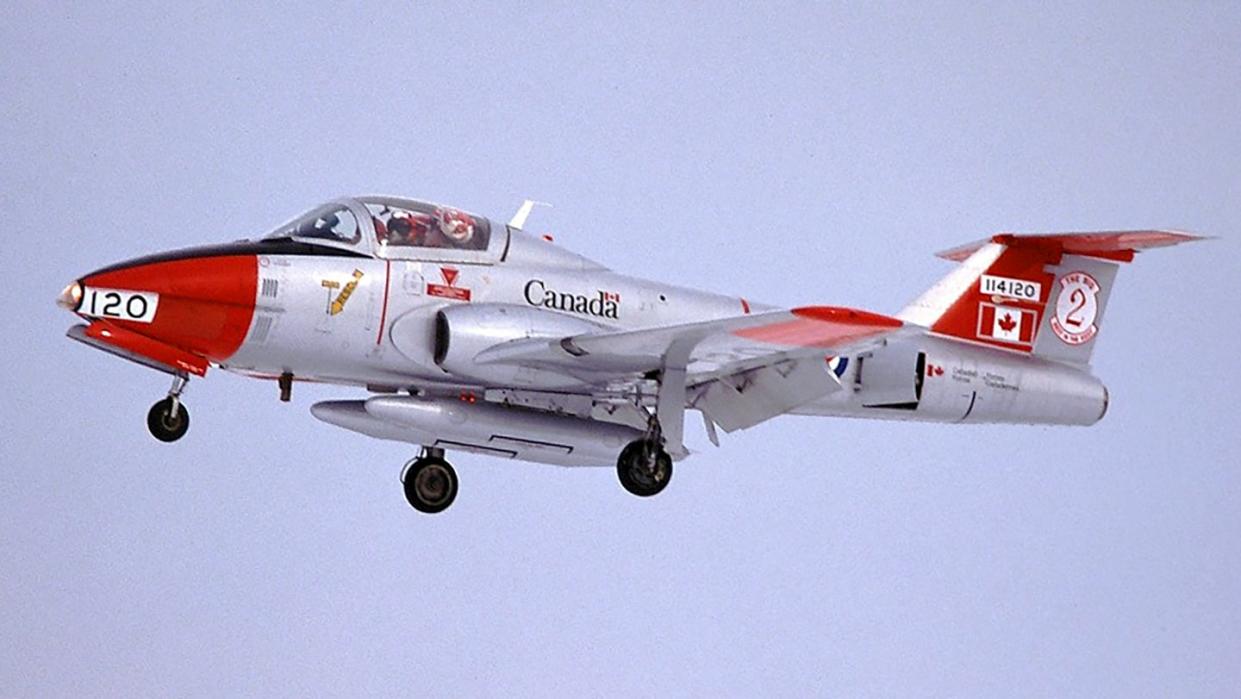
You gotta be shitting me (YGBSM) – no student would ever do that?!
At about 2,500 feet above ground, upside down, with the speed decaying below 100 knots (kts), the stick started to shake as our CT-114 Tutor jet trainer started to stall. In the right seat, my hands left my lap and hovered just inches away from my set of controls, but not quite ready to take over – unless things got worse than being out of speed, inverted.
Then, things got worse. Way worse.
“Okay, forced landing checklist: Throttle off.”
Faster than I could react, the student slammed his throttle to cut-off. The little jet engine stopped producing noise and thrust, and the aircraft shuddered violently as it was now almost fully stalled, still upside down, with a now-dead engine.
How did we get here? Role-playing.
I was learning to be a military flying instructor, and my ‘student’ was actually a highly-experienced instructor. While this was supposed to be an academic situation, the fact that we were now flying an inverted 7,000 pound glider that had run out of airspeed was very, very real.
Canada used the Tutor for decades as its basic pilot training aircraft. Now, it’s still the mount of the Snowbirds aerobatic team, more than 60 years after it first entered service. I had just finished earning my own freshly-minted pilot wings in August, 1981. Two months into the four-month Flying Instructor School (FIS) course, I had completed Phase 1, where I became proficient in flying from the right-hand (instructor’s) seat in the jet trainer.
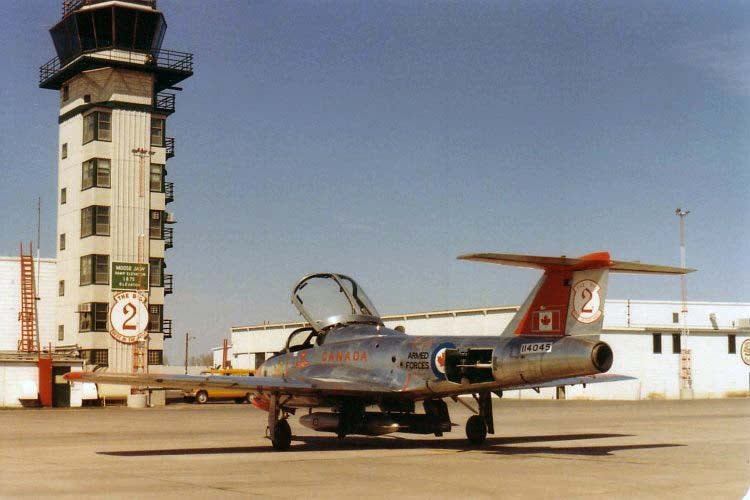
Now, I was on my first Phase 2 trip with Mel Warren. Mel was an experienced Boeing 707 and Hercules pilot, and had spent years instructing as well. The day before, he’d given me the scenario for the flight, and also the ‘progress book’ that represented the student he’d be playing. The progress book contained multiple colored cards, each of which was an evaluation of a previous flight.
I read through the cards, and found myself more and more amazed. Before the end of the day, I stopped by Mel’s office.
“Mel – these cards aren’t real, are they?”
He just smirked. “Yup. That’s why the names are blacked out. They are 100% real students.”
I gawked. “But they’re terrible! I mean, this student has several failed trips, and has repeatedly failed to accomplish simple tasks, flight after flight.”
Mel reached up (he was a head shorter than me), and clapped a hand on my shoulder. “Dan, welcome to the world of real students. After you’ve instructed for a while, you’ll understand.”
I really was incredulous. My own experience as a student had been completely different from what I saw in the progress book – but then I realized that maybe most students had not done as well as I had. Admittedly, I had won the flying trophy on my wings course – but I had no idea just how bad some students could be.
I spent hours putting together the briefing for my flight the next day, and tossed and turned all night in anticipation. Finally, it was time. Mel showed up at the briefing room, hunched over and looking even shorter than usual, shyly avoiding my gaze.
“Hello Sir” he mumbled as he sat down, wringing his hands.
I did my best to keep a straight face. This man, twice my age, was presenting as a student with zero confidence. He mumbled about how his regular instructor hated him, and that he would probably fail the course next week. He asked me if I would yell at him if he screwed up; I assured him that I was being paid the same whether he passed or failed, and that my job was to do my best to teach him to fly.
Mel, like all the FIS instructors, was a master role-player. Before long, I was in character as well, acting like I was a real instructor, conducting the briefing the way I’d read it should be done. Today I was to teach Mel how to navigate at low altitude – 500 feet above ground, at four miles per minute (240 kts groundspeed).
I won’t bore you with the details of the pre-planned navigation trip. Things got exciting when we arrived back near home base at Portage la Prairie, Manitoba.
“Okay Dan, time for a Random Air Lesson. Teach me PFLs (Practiced Forced Landing) from the Traffic Pattern.”
His use of my first name was my cue that he had stepped away from role-playing long enough to drive the next item in our training flight.
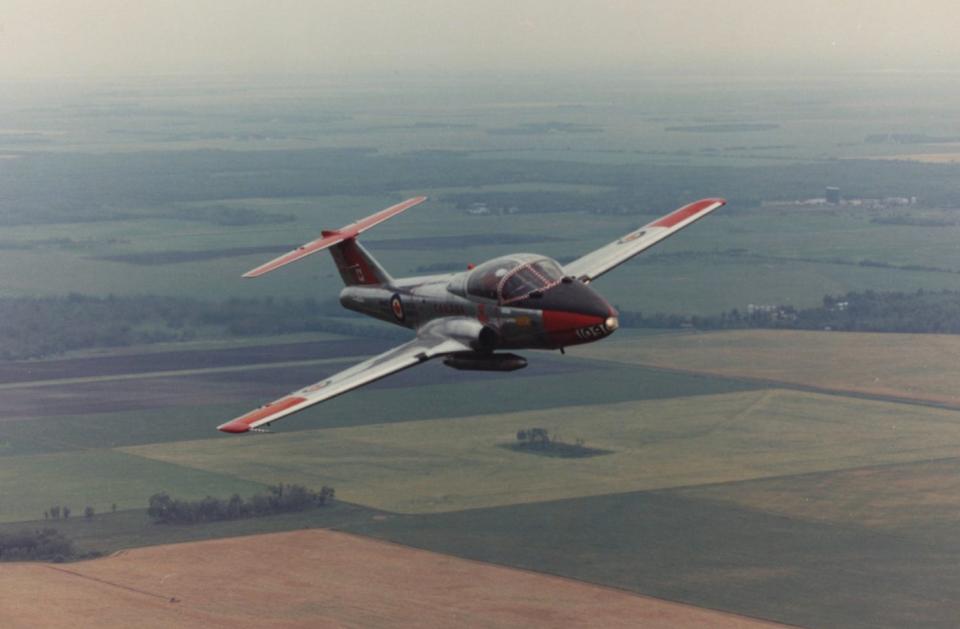
Random Air Lessons were used in our instructor training and periodic requalification checks. The ground rules were simple. The ‘student’ was considered to have been adequately ground-briefed on the given task – in this case, an engine failure and PFL from the Traffic Pattern. The person being trained as an instructor (or undergoing an annual check) would apply EDIC (don’t worry – you’ll see in the next paragraph) and go through the task with the ersatz student.
I was to explain what I was about to do, Demonstrate the maneuver, get the student to Imitate it by doing it himself, then take back control to Critique the student on what he’d done well and what hadn’t gone well. We’d been taught to critique in a ‘shit sandwich’ format. Start with encouragement, then get into the poorly-done stuff, and finish with more encouragement.
On joining the traffic pattern, I took control, and asked Mel if he was ready for the demonstration.
“Yes Sir!” he said, enthusiastically, bobbing around in his seat like a Jack Russell Terrier despite the tight straps. I flew around the traffic pattern to a position about a quarter of the way along the downwind leg.
I pulled the throttle back to where the landing gear horn sounded and selected speed brakes out. In the Tutor, the engine idled at 50% RPM. Even at idle, it produced enough thrust to improve gliding performance too much, so we simulated a complete lack of thrust by pulling back the throttle to 65% and extending the speed brakes.
This thrust setting, coupled with the extra drag of the speed brakes, simulated an engine-off condition very well, while ensuring the engine was able to give thrust if needed to recover from a dangerous situation. At the same time, the landing gear warning horn went off at the same throttle setting (65%), meaning it was a constant reminder that the gear had not been selected down – a critically important way of ensuring students would not forget to drop the gear before landing.
We were now almost opposite the threshold of the runway, at 1,500 feet above ground level (AGL), heading downwind about three miles from the runway. From here, a pilot who lost thrust would pull up (zoom) to gain altitude while losing speed, aiming for a tangent to the circular forced landing pattern that would take him to the runway in a descending glide. The point with 90 degrees of turn remaining was called Final Key, about 1,000 feet above ground in a 30 degree banked descending turn.
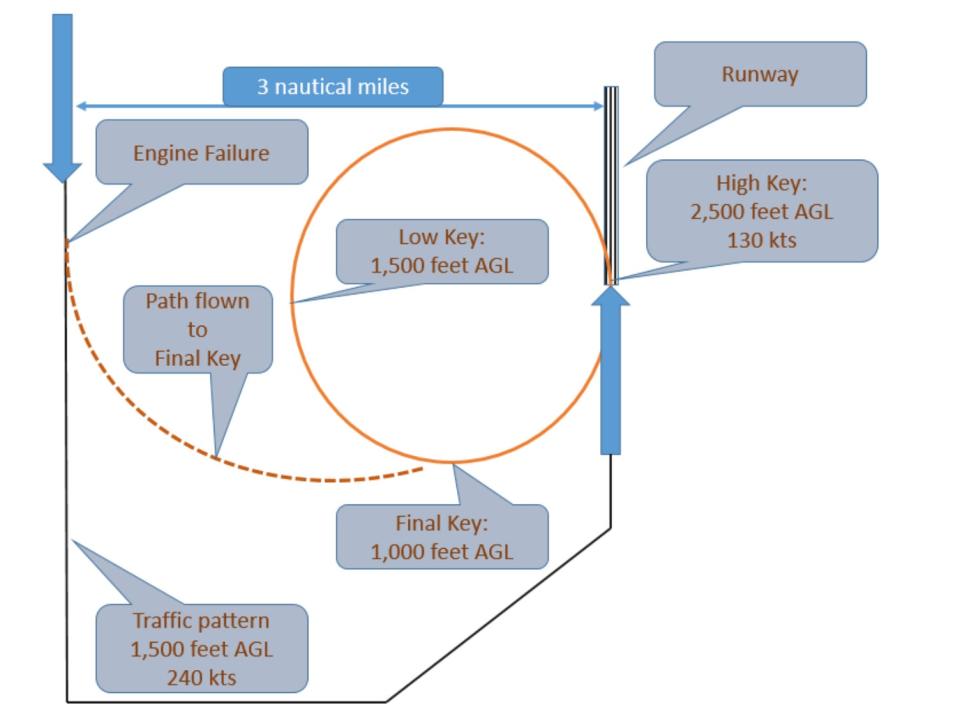
“Simulated engine failure, Mel. Here’s the zoom…”
I pulled the nose up, trading my 240 kts of airspeed for altitude, aiming for best glide speed of 130 kts. As I pulled up, I realized I had the nose a little too high, because I was losing speed too quickly.
“My nose is a bit high here, so I’ll just overbank slightly to allow the nose to drop below the horizon and get our 130 kts.” I rolled to about 75 or 80 degrees of left bank without increasing back-pressure on the stick, which had the effect of allowing the nose to fall. When it got to the right nose-down angle, I reduced the bank to 30 degrees, and flew the arcing descent toward Low Key.
“Viking 12, simulated engine failure, request Low Key.”
“Viking 12, number 1, call Low Key.”
I kept a running commentary, showing Mel what I was looking for in terms of visual cues and altitudes and speeds at each point. Low Key was attained right on parameters, 1000 feet above ground, and I called the speed.
“132 kts, gear down please.” Mel called the speed as well, and obligingly dropped the gear.
I waited until the horn stopped beeping, dropped the flaps to half, checked the indications, and called Low Key for a ‘Go, with the gear, on Runway 13R.’ I was cleared, and I flew the aircraft to a perfect landing, adding power and taking off again, completing a touch-and-go. After Mel had selected gear up for me, and the post-take-off check was complete, I gave him back control, and asked if he was ready. “I think so, Sir” came a trembling, nervous voice.
Downwind in the pattern, at the same place I had done the demo, I reduced power to the horn and popped my speed brake switch out. “Simulated engine failure, Mel.”
Instantly, Mel started hyperventilating, and yanked the stick back hard, pulling 4G. The nose was way higher than when I had done my demo. He then rolled inverted, and pulled down hard, mumbling “Overbank, just like you Sir.”
I had a sudden flash of something we’d been told in our instructor training. Any mistakes made by an instructor during a demonstration would sometimes be emulated, and even made worse, by the student trying to imitate the maneuver. Oops.
At about 2,000 feet above ground, upside down, with the speed decaying below 100 kts, the stick started to shake as he entered a high-speed stall. Mel then said “Okay, Forced Landing Checklist, Throttle Off.”
This was the ‘way worse’ situation I described in the beginning.
“I have control” I yelped, and eased the stick forward to zero G, rolling slowly back into a gentle left-hand turn toward the runway. I think I put a dent in the top of the throttle where I was frantically pressing the ‘airstart’ button as I advanced the throttle to idle and prayed for a relight.
I quickly assessed the flight path, saw that we could make the runway, and my sphincter relaxed slightly. Out of the corner of my eye, I saw the Exhaust Gas Temperature (EGT) start to rise and the RPM winding slowly toward idle, as the engine obediently relit.
“Viking 12, approaching Final Key; this will be a full stop...”
Mel cut me off before I could say anything else. “Make it a Go, Dan – the engine’s fine, and I’m a maintenance test pilot.” The flying school rule was if the engine quit, for any reason, you did a full stop landing.
I learned my first real-world instructing lesson: context. Mel routinely shut down and relit engines on test flights. He knew exactly why it failed (because he shut it off, in case you weren’t paying attention), and it was now running fine.
I don’t remember the rest of the trip, but I do remember the debrief. I wasn’t angry, but I asked Mel if that was really likely a student shutting off the engine like that. He chortled. “You ain’t seen nothin’ yet”, nodding vigorously. We had a bit of a discussion about it, and I deferred to his experience, but still didn’t quite believe him.
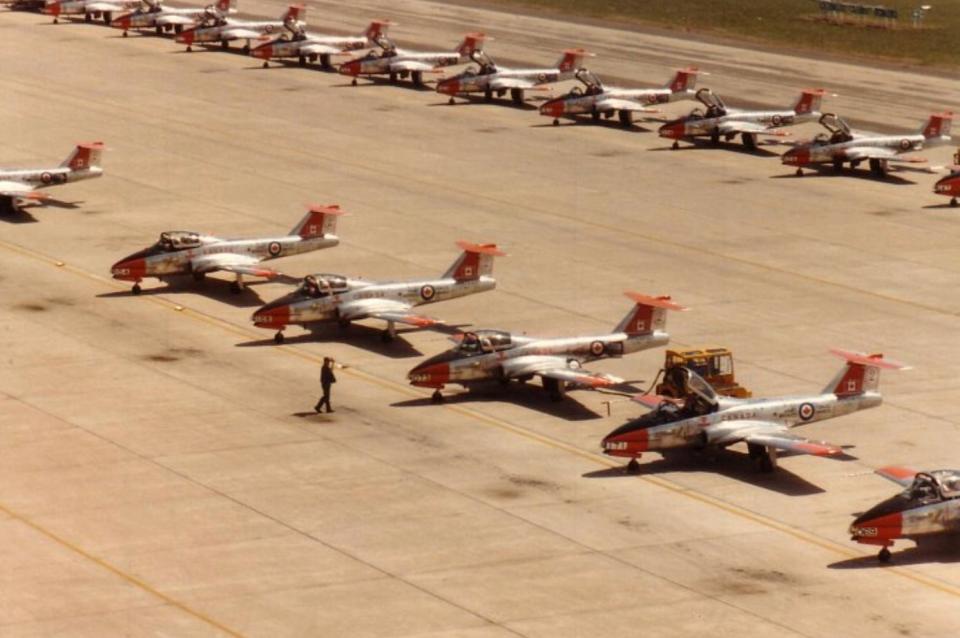
A few months later, back at the Big 2 Flying Training School in Moose Jaw, Saskatchewan, my former coursemate Lee Obst was instructing on his very first mission with a real student. What was he teaching? Practice Forced Landings (PFLs) from the area.
Everything went okay, except that the student arrived far too low at High Key. Instead of 2,500 feet above ground, he was at 1,500 feet above ground, meaning it would be quite impossible to make the runway without adding power and abandoning the PFL profile.
Lee was considering when to take control, or if he should just tell the student to add a bit of power or retract the speed brakes to make the profile work, when they arrived at High Key. The student called High Key, was given his sequence number by the tower, and started his turn, still 1,000 feet too low to make it.
“Forced Landing check” mumbled the student, and, you guessed it, shut the engine off. Lee took control, relit the engine, and called for a full stop. He retracted the speed brakes, and coaxed as much glide as he could out of the aircraft as the engine wound ever so slowly up to idle. Just past Low Key, now only 500 feet too low (hurray for small victories), the engine arrived at idle, and Lee advanced the throttle gingerly, feeling the reassuring surge of thrust arrest their descent rate. They landed safely and taxied back in.
That night, Lee called me and said “Let’s get a beer.” He told me the whole story. The rest did not have to be said. A bunch of us had gotten together during the Flying Instructor course and talked about the various bizarre moves the staff was pulling on us, including Mel’s shut-down of the engine.
We were young and naive; none of us believed students could be so dangerously unpredictable. We learned never to underestimate the adrenaline- and fear-fuelled pressure that they were under. We had conveniently forgotten what it was like to be students, but the Flying Instructor School helped us relearn.
Lee, and the rest of us, learned that it was prudent to grab the instructor’s throttle firmly and prevent the student from smacking theirs to the cut-off position – something I did every single time one of my students went through a forced-landing check.
Another lesson I learned on that trip with Mel was when to take control. Mel and I talked a lot about trusting one’s instincts. He said that I should never hesitate, and that even if it meant the student would fail a flight as a result, that was far better than a damaged aircraft or worse yet, ejections or a crash with fatalities. Allowing students to learn from their mistakes and to think through scenarios was important, but safety was always number one.
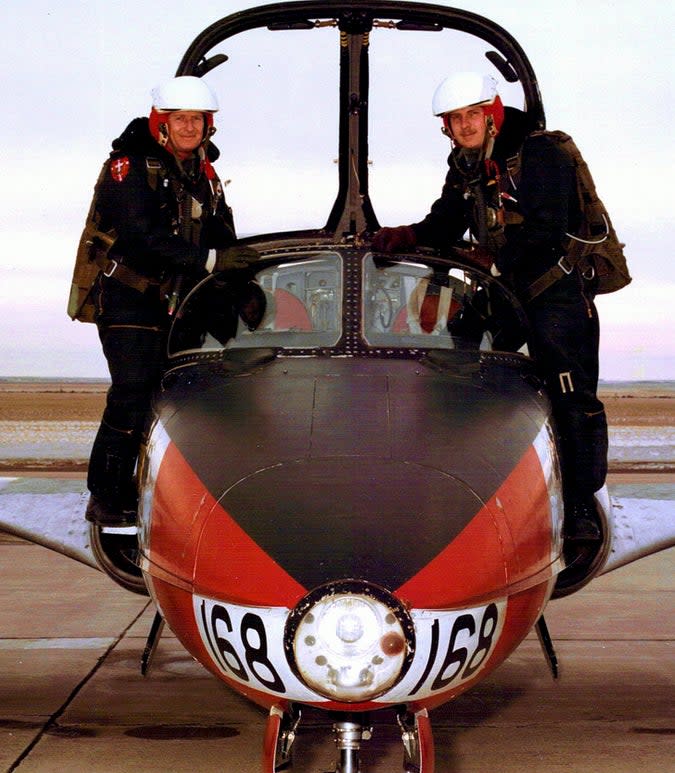
Retired Major Dan McWilliams logged 3,200 hours over 20 years in the Canadian Air Force, flying the CT-114 Tutor, CF-5, T-33, and CF-18. A specialist in Electronic Warfare and software, he managed a group of engineers developing mission-critical software for the CF-18 and for CF-18 simulators. He later flew and instructed in the Challenger 604, tested full-mission simulators for military customers, managed a CF-18 mission training center, and taught at an aviation college.
Contact the editor: tyler@thedrive.com

